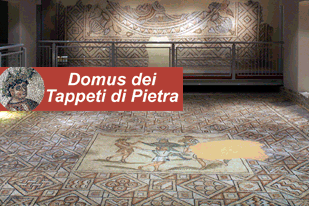Palazzo Corradini in the centre of Ravenna.
Palazzo Corradini in the centre of Ravenna. Hotels near Palazzo Corradini, university seat.
Photo: facade of Palazzo Corradini, via Mariani
It was built in the early 17th century and was extensively renovated the following century, to mark the wedding of count Lodovico Ginanni and Maddalena Corradini (1717).
In that first half of the 18th century the town was full of various private stately buildings: Rasponi dalle Teste, Spreti, Baronio. These new buildings were however inadequate to totally transform the overall aspect of the town, which remained modest, with low brick houses, without embellishment or taste.
In this context, the harmonious Baroque style of palazzo Ginanni Corradini is more evident.
On the night of 28th May 1636 the building was used to house 89 starving nuns that had escaped from the collapse of the monastery of Sant'Andrea Maggiore which had been engulfed by the high water of the Ronco and Montone rivers, following the breaking of the banks.
"The water rose to a level exceeding that of two rooms d' huomo", wrote the reporter Serafino Pasolini, "and it was horrible and frightening to watch the water flowing over all the roads.”
The town was flooded for three days, there being many victims and great damage. It was the most serious flooding to have occurred in Ravenna between the 16-18th centuries, although this period experienced a series of flooding incidents.
There is a small walled plaque in via Salara, at the angle with via Cavour, in memory of the event which reads: "the water reached here".
The two rivers, that during the era of the communes had been made to flow around the walls to protect the town and supply it with water, had become a constant threat.
It was only in 1739 that the Ronco and Montone rivers were diverted upstream of the town and directed together towards the sea, in a single section which still today is known as Fiumi Uniti (united rivers). In recent times this town building is probably that which has experienced the greatest number of changes in its original purpose.
In the period between the 19th and 20th century, it was no longer used as a private residence and was instead used to hold public meetings: it wash ere that the controversial meeting of the labourers movement were held and in 1882, the first congress of the Revolutionary Socialist party in Romagna, that supported Andrea Costa, the first socialist deputy to be elected to the House.
At the time, the courtyard container a timber deposit. In the most recent post war years it housed a police barracks and in the 1970’s the Student’s house; it subsequently also housed the provincial administrative offices, that owns it, as well as meeting and film projection halls and it is now a university building.
Photo: facade of Palazzo Corradini, via Mariani
The pleasure of fine accommodation in the centre of Ravenna: we recommend the Fabbri hotels for a pleasant stay as follows:
The Centrale Byron Hotel, 3-star hotel in the centre of Ravenna, close to the main momuments;
The Bisanzio Hotel, 4-star hotel in the centre of Ravenna, close to the main momuments;
Once you have reached the hotel and parked your car, forget it and walk everywhere, because everything is within walking distance.
© reserved copyright






